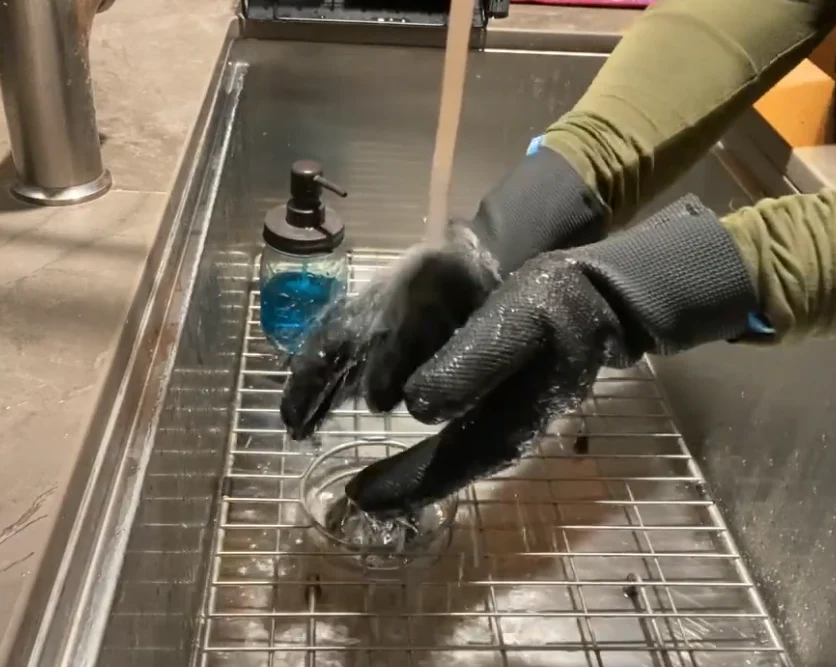No matter what type of glove it is, proper maintenance is essential to ensure its longevity and continued use. Neoprene gloves are no exception. Below, we will comprehensively introduce everything about neoprene gloves and how to care for them, ensuring you fully understand these gloves.

Neoprene Gloves
Neoprene gloves are made from rubber (neoprene rubber) formed by the polymerization of chloroprene with specific chemical additives. They were first developed by DuPont in the 1930s. These gloves are known for their excellent chemical resistance, waterproofing, and outstanding elasticity. They offer strong resistance to acids, alkalis, oils, solvents, and other chemicals, and they maintain stable performance within a certain temperature range. Neoprene gloves are especially suitable for use in humid environments and can be worn for long periods without causing discomfort.

How to Care for Neoprene Gloves
To ensure that your neoprene gloves do not prematurely age, crack, and lose elasticity due to improper care, appropriate maintenance can extend their lifespan, save costs, and maintain long-term high performance. So, how should you maintain them for optimal performance?
Wearing
When wearing neoprene gloves, avoid using your nails to pull or tear them forcefully. When removing the gloves, do not only pull at the fingertips! Never tug violently or tear the gloves forcefully, as excessive pulling may damage the gloves.
Cleaning
After each use, it is recommended to immediately rinse the gloves thoroughly with clean water to remove stains, salts, sand, and other debris or chemical residues from the surface. Avoid using strong cleaning agents, bleach, or other harsh chemicals, as these substances can damage the gloves and affect their performance.
Drying
After cleaning, allow the gloves to air dry naturally. Do not expose neoprene gloves to direct sunlight or high temperatures for extended periods or use a dryer. Excessive heat can cause the gloves to degrade and lose elasticity, which helps prevent material aging, hardening, or cracking, avoiding unnecessary problems.
Regular Inspection
Before each use, or at the same time, inspect the gloves for any signs of cracks, aging, or wear. If the gloves show signs of tearing, puncturing, or seam damage, replace them immediately or make necessary repairs. Regular inspection is especially important when working in environments where there is exposure to chemicals or grease, as the durability of neoprene gloves may be tested in these settings.
Avoid Contact with Sharp Objects
Although neoprene gloves have some abrasion resistance, avoid direct contact with sharp objects to prevent cuts or punctures that could compromise their protective performance.
Storage
When storing neoprene gloves, place them in a dry, cool place, avoiding direct sunlight or extreme conditions. It’s best to hang or lay them flat in a well-ventilated area. Avoid folding or compressing the gloves for extended periods to prevent shape distortion, which can cause permanent damage to the material.

Conclusion
By following these simple but effective maintenance steps, you can help extend the life of your neoprene gloves, reduce the need for frequent replacements, enhance their environmental sustainability, and ensure they provide comprehensive protection for your hands in various work environments.
If you are interested in these gloves or want to purchase neoprene gloves, please contact us soon. Aibon will be happy to assist you and ensure every adventure is better protected!
How to Measure Glove Sizes – Source: AIBON
Latex gloves– Source: AIBON
Safety gloves– Source: AIBON
Working gloves– Source: AIBON

